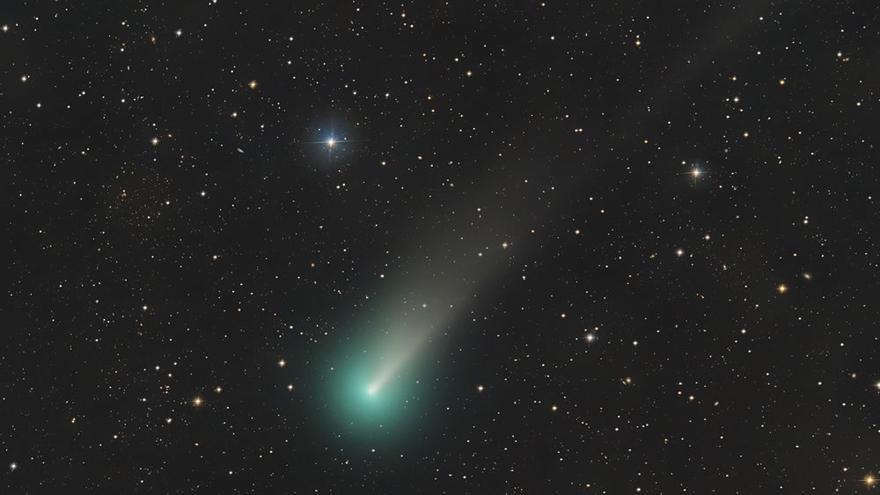Comet C / 2021 A1 Leonard, a huge rock made up of ice, dust and gas, approaches Earth this December that comes from the Oort cloud, at the edge of the Solar System.
Leonard will make his closest approach to Earth this month, making it possible to observe it with binoculars or a small telescope., even some predictions suggest that it may be possible to observe it with the naked eye. In the northern hemisphere, Comet Leonard will have its closest approach to Earth on December 12, when it is almost 35 million kilometers from our planet.
Around that date, before dawn, Leonard can be seen with the naked eye almost anywhere in the world. A practical way to locate the path of Comet Leonard is to center between the constellation Ursa Major and Arthur (the third brightest star in the night sky in the constellation Boyero).
Although astronomers predict that Leonard’s brightness reaches a magnitude between 5 and 2.5 in the week before December 12 (like a very faint star barely visible to the human eye), the brightness and visibility of comets is unpredictable, NASA reports.
Most likely, it is almost impossible to observe with the naked eye in skies with minimal light pollution. Instead, it is best to use binoculars or a hobby telescope from rural areas or with skies free of light pollution.
After December 12, Leonard will become an increasingly distant object and it will still be possible to observe him at dusk in the southwest, accompanying Venus after the Sun sets.
In the second half of December, it will reverse its position from north to south, so that the countries of South America could see it in its distance from Earth near the western line of the horizon.
Three weeks later, Comet Leonard will continue its course towards the inner planets and will finally reach perihelion (the point of its orbit closest to the Sun) on January 3, 2022, to begin a trip of no return beyond our Solar System.
– .


